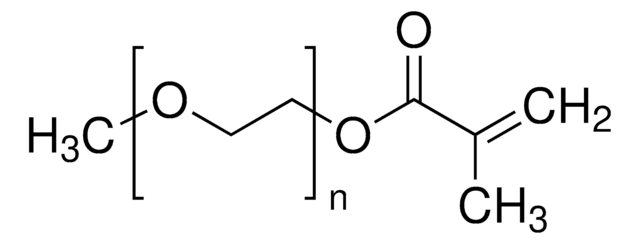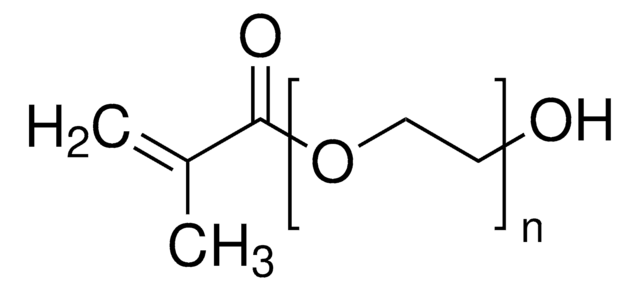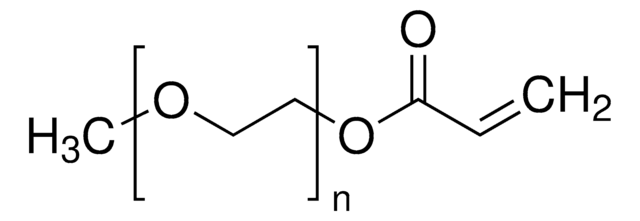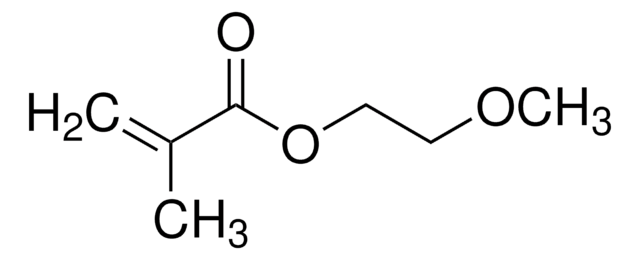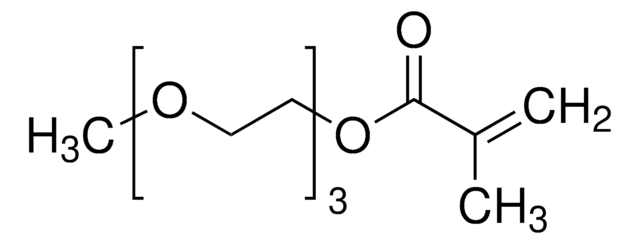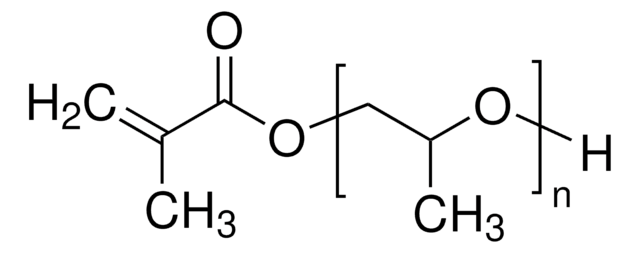409537
Poly(ethylene glycol) methacrylate
average Mn 360, contains 500-800 ppm MEHQ as inhibitor
Synonym(s):
Ethoxylated 2-hydroxyethyl methacrylate, PEGMA, Poly(ethylene oxide) monomethacrylate, Polyethylene glycol
About This Item
Recommended Products
form
liquid
Quality Level
mol wt
average Mn 360
contains
500-800 ppm MEHQ as inhibitor
reaction suitability
reagent type: cross-linking reagent
reaction type: Polymerization Reactions
refractive index
n20/D 1.464
density
1.105 g/mL at 25 °C
Ω-end
hydroxyl
α-end
methacrylate
polymer architecture
shape: linear
functionality: heterobifunctional
InChI
1S/C6H10O3/c1-5(2)6(8)9-4-3-7/h7H,1,3-4H2,2H3
InChI key
WOBHKFSMXKNTIM-UHFFFAOYSA-N
Looking for similar products? Visit Product Comparison Guide
Related Categories
General description
Application
- Degradable microspheres using asuspension polymerization process. The amphiphilic nature of PEGMA allows performingthe polymerization by direct oil in the water suspension process.
- Polymeric chelating beads for the effectiveremoval of heavy metals from aqueous solutions.
Physical form
signalword
Warning
hcodes
Hazard Classifications
Skin Irrit. 2
Storage Class
10 - Combustible liquids
wgk_germany
WGK 3
flash_point_f
235.4 °F - closed cup
flash_point_c
113 °C - closed cup
ppe
Eyeshields, Gloves, type ABEK (EN14387) respirator filter
Certificates of Analysis (COA)
Search for Certificates of Analysis (COA) by entering the products Lot/Batch Number. Lot and Batch Numbers can be found on a product’s label following the words ‘Lot’ or ‘Batch’.
Already Own This Product?
Find documentation for the products that you have recently purchased in the Document Library.
Customers Also Viewed
Articles
Progress in biotechnology fields such as tissue engineering and drug delivery is accompanied by an increasing demand for diverse functional biomaterials. One class of biomaterials that has been the subject of intense research interest is hydrogels, because they closely mimic the natural environment of cells, both chemically and physically and therefore can be used as support to grow cells. This article specifically discusses poly(ethylene glycol) (PEG) hydrogels, which are good for biological applications because they do not generally elicit an immune response. PEGs offer a readily available, easy to modify polymer for widespread use in hydrogel fabrication, including 2D and 3D scaffold for tissue culture. The degradable linkages also enable a variety of applications for release of therapeutic agents.
Our team of scientists has experience in all areas of research including Life Science, Material Science, Chemical Synthesis, Chromatography, Analytical and many others.
Contact Technical Service